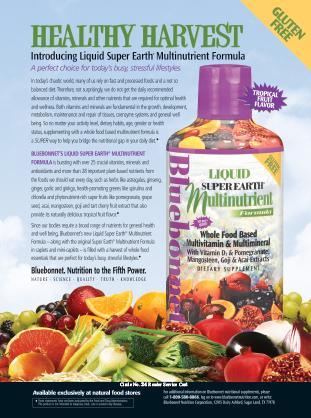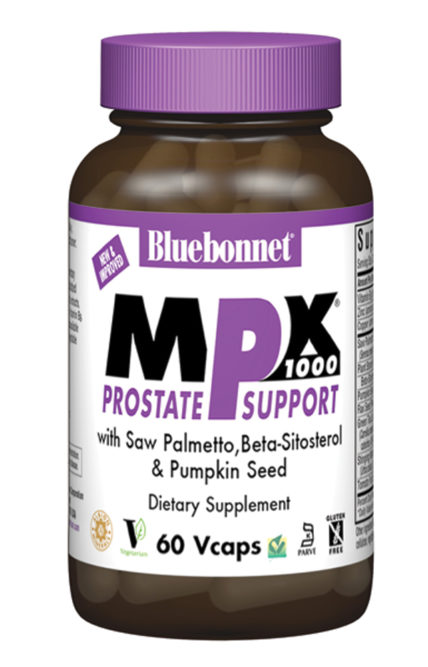Q. We are hearing a lot about the benefits of whole foods in the diet. What is the latest information?
A. Everyday, researchers are finding new links between the environment, diet and health. The challenge is to find ways to protect one’s health in a world bombarded with impurities. In plants, the varieties of color that are found within fruits and vegetables represent and provide important nutrients that help protect the body from the ravaging world around us. There are more than 10,000 known phytonutrients (“plant-based nutrients” with specific pharmacological benefits). Some of the well-known phytonutrients are lycopene in tomatoes and EGCG from green tea. It is no secret that most diets are severely lacking in phytonutrients and other whole nutritious foods. In fact, the traditional western diet is based on animal foods, such as meat and dairy products. This diet does not provide many plant foods like fruits, vegetables and whole grains; therefore, the typical western diet has been linked to many of the health issues Americans face today. Even prestigious research institutions, including the National Cancer Institute, are urging Americans to eat more varied, well-balanced diets that are rich in dark, leafy greens. This is due to the multitude of active components (phytonutrients) provided by green foods, fruits and whole grains grown locally, which have been shown in research to play an important role in the healthy maintenance of the human body. †
Q. Now that we know all about the importance of whole food nutrition, how can consumers make sure they get the nutrients they need?
A. In today’s fast-paced world, consumers are on the go and rely on fast and processed foods and not on a well-balanced, nutritious diet. Most people do not get the daily-recommended allowance of vitamins, minerals and other nutrients that are required for optimal health and wellness. Both vitamins and minerals are fundamental in the growth, development, metabolism, maintenance and repair of tissues, coenzyme systems and general ongoing health. Multivitamin and mineral formulas help to bridge the nutrient gap in daily diets. So, for those who believe they should get most of their nutrients from the foods they eat and they want a multivitamin and mineral supplement to support that philosophy, look to whole food-based multiples. While there are many of these types of supplements in the marketplace, the one I use and recommend to my patients is Bluebonnet’s Super Earth Multinutrient Formula (now also available in liquid form). No matter one’s activity level, dietary habits, age, gender or health status, supplementing the diet with a multiple that supplies crucial vitamins, minerals and nutrients through super foods can be the perfect antidote to today’s busy, stressful lifestyles.
Q. Speaking of super foods, what exactly are they?
A. Super foods are nutrient-dense foods with concentrated phytonutrient contents. Some whole food-based multiples
contain super foods called super fruits. Super fruit is a term that was coined in this decade pertaining to any fruit with
exceptional antioxidant properties revealed by publication of United States Department of Agriculture assays on antioxidant strength, the oxygen radical absorbance capacity or ORAC for 100 common foods. Examples of super fruits include açaí, goji (wolfberry), elderberry, cranberry, blueberry, pomegranate, mangosteen, noni, sea buckthorn and grape. They provide potent polyphenols and phytonutrients that have been shown in research to have powerful free-radical scavenging activity. Other health-promoting super foods to look for in whole food-based multiples include green foods like spirulina and chlorella. †
Q. Interestingly, both açaí and pomegranate are getting a lot of press lately. Why have they become so popular?
A. Israeli scientists began a new wave of Western interest in pomegranate in the 1990s as studies began to show that
consumers who supplemented their diets with pomegranate juice, which is naturally high in antioxidants, seemed to
improve some key indicators of cardiovascular health. Subsequently, there are many recent studies showing the health benefits of the active constituents in pomegranate ¬– including polyphenols, punicalagins and ellagic acid – ranging from potent antioxidant protection to prostate and cardiovascular support. †
|
Definition of Whole Food Nutrient-dense fruits, vegetables or whole grains/grasses with concentrated antioxidant and phytonutrient contents and minimal processing, for example: tomatoes, pomegranates, açaí, spirulina and chlorella. |
Açaí berries, on the other hand, are produced by a particular palm tree and were discovered in the 19th century by German botanist, Carl Friedrich Phillip Martius. These berries are nutrient-dense, possessing high concentrations of polyphenolic antioxidant compounds, proanthocyanidins, flavonoids and anthocyanins. These polyphenols account for why this fruit has the highest known ORAC value compared to other red/blue berries earning it the well-deserved “super fruit” title.†
Q. What are the benefits of taking a whole food-based multiple in a liquid dosage form?
A. There are several advantages of taking a liquid formula versus a capsule or caplet, such as flavor, ease of administration, increased compliance and most importantly, digestibility. With a liquid formula, the amount of time it takes the nutrients to go from the stomach to the small intestine for absorption is miniscule. Capsules and tablets, on the other hand, can take from 30 to 45 minutes to break down, which is the disintegration/dissolution time set by the U.S. Pharmacopeia. For persons who are older, have dysphasia (the medical term for the symptom of difficulty in swallowing), or have difficulty complying to an overabundance of oral medications already, liquid whole food-based multiples like Bluebonnet’s New Gluten-Free Liquid Super Earth Multinutrient Formula are a perfect solution. 
| † These statements have not been evaluated by the Food and Drug Administration. This product in not intended to diagnose, treat, cure or prevent any disease. |
Carl Germano, RD, CNS, CDN, is a registered, certified nutritionist and holds a Master’s degree in clinical nutrition from New York University. With over 30 years of experience using innovative, complementary nutritional therapies in clinical practice and in research and product development, he is also the author of several best-selling books on the subject of nutrition. While being a frequent radio guest and lecturer, Carl has held several VP of Research & Product Development positions with major companies and is currently an R&D consultant for Bluebonnet Nutrition Corporation. For more information, visit www.carlgermano.com.
Pulished in WholeFoods Magazine, February 2010










